China’s Maritime OBOR Strategy puts pressure on EU-MENA logistics and security?
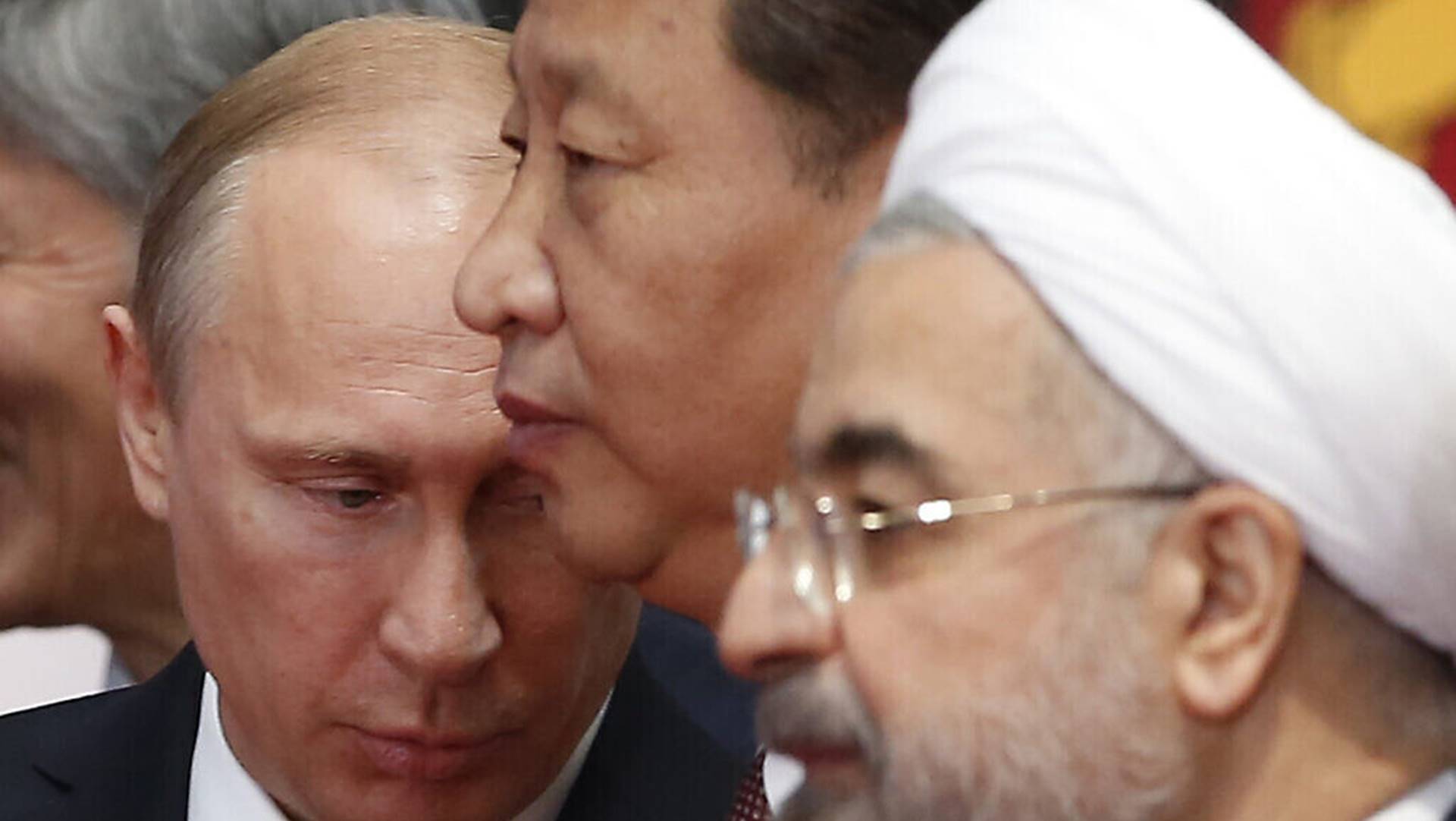
Global maritime routes, which are transporting around 85% of global trade, are increasingly under security threats.
After years of being confronted by increased piracy incidents, especially around the Horn of Africa, West Africa, or the Strait of Malacca, another threat is clear and present, but not being talked about in Western media at all. With the US, supported by European countries, Australia and Japan, focusing on the South China Sea, changing alliances, and upcoming Chinese military power projections however have set their target on a still under-assessed region, the Indian Ocean.
Saudi Arabia in crosshairs Iran and Houthis after Natanz? Heat is on!
The growing impetus by the USA to redirect its naval presence from the Mediterranean and MENA region, including onshore military assets and troops, the central or maybe in the future pivotal role of the area between the Horn of Africa (Red Sea-Suez Canal), Strait of Hormuz (Persian Gulf), India and East Africa is being forgotten, leaving it open to new powers, especially China and Russia.
Last weeks, a growing amount of information emerged from inside the Biden Administration that due to the fact that the US views China as a top strategic threat, especially inside the South China Sea arena, it will need to reduce its military presence in the Middle East, even if this goes at the cost of destabilization. Possible anti-Western parties, especially Iran, but possibly others, will be given to chance to reap some of the rewards.

Still, the impact of Iran, or other emerging regional powers is far from the level of threats posed by China’s creeping but continuing naval power projections, which are NOT only be focusing on the South China Sea, the Spradley Islands of Taiwan. China’s emerging naval presence on a global scale is not to be taken lightly, as it is directly linked to its well-documented One Belt One Road (OBOR) approach.
Both, naval/military and economics/trade are linked to a level that should be worrying to most, but especially global traders, shippers, or the countries in the middle of the Chinese power projection, the Middle East. With US experts and military advisors planning to set up a comprehensive plan to prepare American forces, deployed in various parts of the world, for a possible mission to confront China’s threat, the Middle East will again be in the spotlight.
Washington already committed to moving all remaining combat forces from Iraq, although the two sides did not set a timeline in what would be the second withdrawal since the 2003 invasion. US military news sources stated that a Pentagon group of experts, set up US President Joe Biden, but based in the Department of Defense, is being led by US Secretary of Defense.
The Chief of Military and Political Affairs is in charge and the team’s leader is Eli Ratner, Secretary of Defense Lloyd Austin’s special assistant to China. In the coming weeks, this group of experts will present a report to the US Secretary of Defense and the National Security Committee on the required defense capabilities in the event of a military confrontation with China.
China has constructed the arena’s biggest army. Now, what is Beijing going to do with it?
Those capabilities, according to reports, include a defense strategy, availability of personnel and weapons, and actions to manage technical and cyber deficiencies. Based on insiders, it has already become clear that the recommendations will include proposals that lead to a large-scale redeployment of US forces currently present in bases outside the United States.
No details have yet been given, but it will include major redeployments of US forces in the Persian Gulf region. The latter without any doubt will have a detrimental impact on the readiness and capability of US forces not only to protect US-Western interest in the Persian Gulf region and its littoral states but also will weaken its capabilities to protect major trade routes through the Red Sea-Suez Canal area and the East Coast of Africa.
US media is still linking these changes to possible Iran and proxy options, but should also take a look at the Chinese presence and buildup in the region and US options towards India’s geostrategic interests in the area.
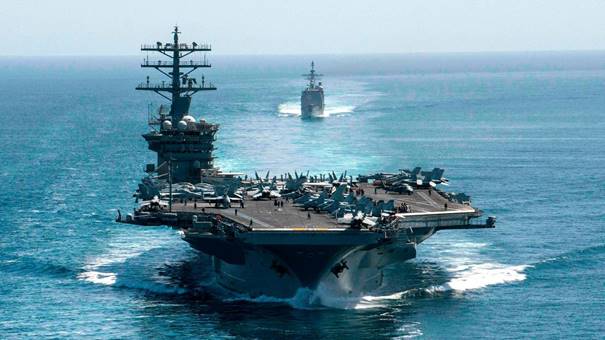
US sources stated that due to the possible redeployment of its forces, much more reliance will be needed from the Arab countries, India, and others, to protect the respective sea lanes. Regional countries, especially Arab Gulf countries, with maybe the exception of Egypt and Israel, are not yet capable to deal with imminent threats at all. US and Western statements that the Middle Eastern powers need to become more self-reliant is a wishful thinking approach, without real realism. At the same time, the US already is redeploying hardware, such as Patriot missile batteries and an aircraft carrier that has always been present in Saudi waters.
Possible additional removal of systems is expected very soon, even that Washington reiterates that it will keep the advanced anti-ballistic missile defense system THAAD and a broad defensive and offensive air force on the Saudi territory. If these developments are going to continue, as is shown by Biden’s approach to de-prioritize Middle Eastern wars and devote more resources to a global rivalry with China, instability in the Indian Ocean arena is to be expected, causing potentially negative fallout for global trade and stability.
The Washington strategy currently being developed is remarkable, to stay politically correct. To set up redeployments of this scale, with also luring European countries, to commit to a larger presence in the South China Sea, is very tricky.
These developments come at a time that Europeans are worried about Russian military deployments at the Ukrainian borders, while implicitly threatening Baltic countries too, Turkey’s East Med strategies and threats, and China signed a major deal with Iran.
When taking a more birds-eye view, China-India tensions are also running high. To focus only on South China Sea issues seems to be a one-sided approach from Washington, looking at one main issue, while Chinese naval and military operations elsewhere keep building up.
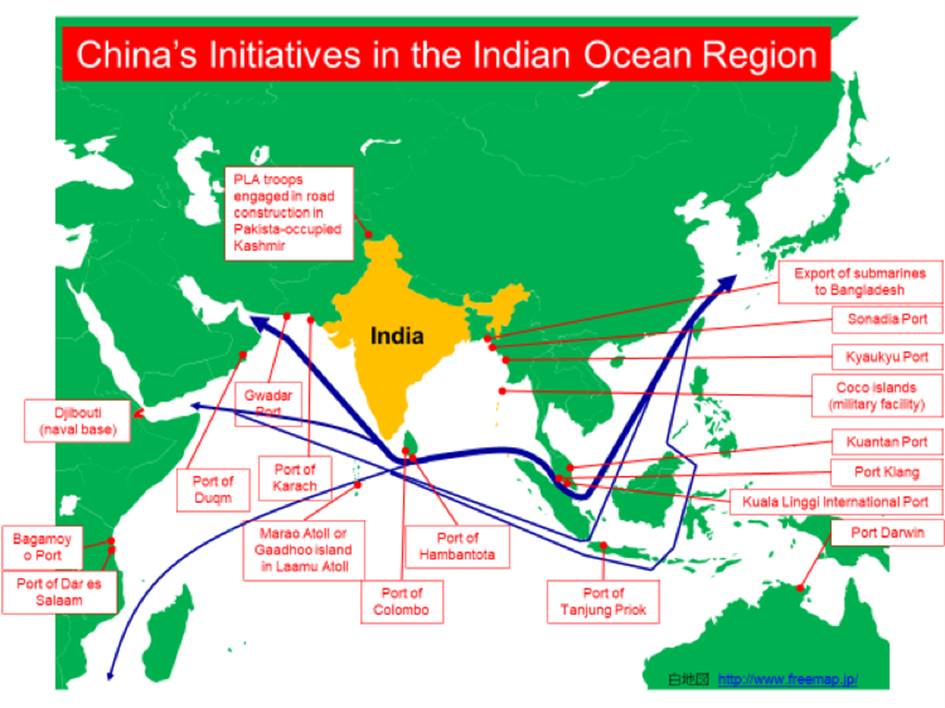
China’s eyes on major trade routes, especially between the Tiger and Europe, have been assessed widely. The new Silk Road or OBOR is still seen as a major opportunity for all, forgetting the strategy taken by Beijing in reality.
Chinese interests are not the same as the economic interests of Europe or some parties in the Middle East. As shown on March 27 2021 Beijing has prioritized its access to Iran over some of the Arab countries, such as UAE, Saudi Arabia, or Qatar. With its 25-year Strategic Cooperation Agreement with Iran, Beijing has put in place its Comprehensive Strategic Partnership, which was presented in 2016. In a 2020 report, showing parts of the draft of the 18-page document, it was already implied that China and Iran were looking to form a new axis in the Middle East, aimed at undermining the United States.
The growing role of China on the Iranian side of the Persian Gulf not only puts a damper on possible Arabian interests but also is a direct threat to Indian geopolitical and geo-economic interests. Delhi is still very interested to take part in Iranian natural gas reserves and continued participation in the Chabahar port project with Iran. Indian reports are currently showing a growing fear for a possible China-India confrontation in the Middle East.
Growing military-economic cooperation between Iran-China and Pakistan is on the horizon, even that some skepticism about the US$400 billion Iran-China deal exists. In 2018, Chinese FDI in Iran was only $$3.23 billion. Some Indian analysts are also referring to the fact that the Strategic Cooperation Agreement conforms to similar agreements between Beijing and both Saudi Arabia and the UAE, currently in the works.
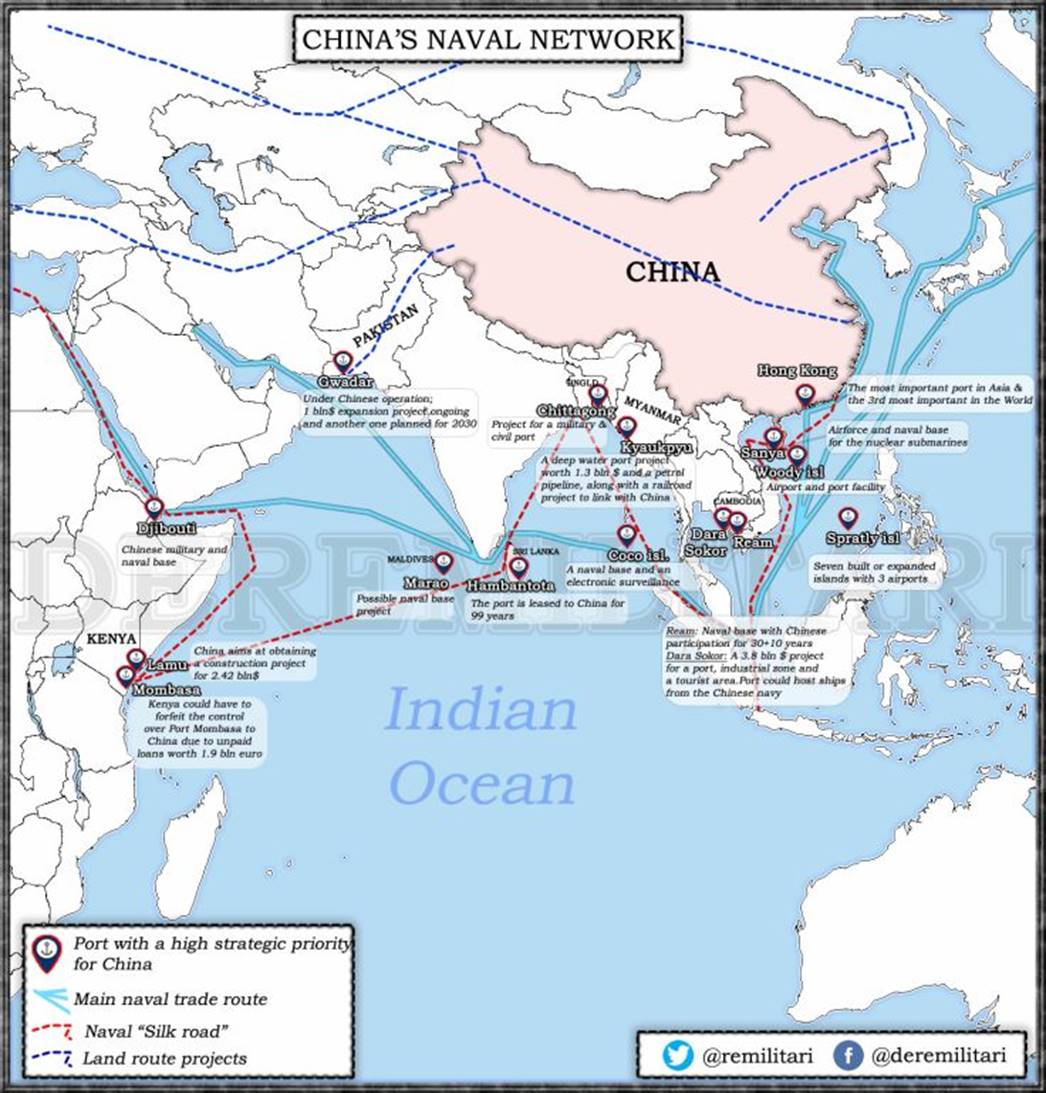
As one Indian military expert stated “the superpower rivalry between China and the United States is quickly coming to resemble the development of the Cold War, and officials in Beijing and Washington are positioning themselves into blocs of like-minded states. Under such conditions, China is attempting to forge an “alliance of autocracies” to counter the United States’ “alliance of democracies” (like the Quadrilateral Security Dialogue in the Indo-Pacific). Beijing, for example, has sought to form a trans-Himalayan Quad grouping of its own with Pakistan, Nepal, and Afghanistan. Beijing’s outreach to the Middle East, particularly it’s Strategic Cooperation Agreement with Iran, are examples of such overtures.”
Still, as part of the current Strategic Cooperation Agreement China-Iran defense cooperation is being targeted, potentially creating space for a broader new Cold War alliance. Furthermore, the deal could allow for China’s investment in Iran to be an extension of its China-Pakistan Economic Corridor (CPEC) – for instance, by linking the Iran-Pakistan gas pipeline to CPEC and therefore acting as a bridge between Islamabad and Tehran. India is already assessing however the measures it needs to take if a China-Iran-Pakistan starts to exist. At present, China is already extending its activities in the Indian Ocean, where New Delhi has long feared a so-called “String of Pearls” network encircling India.
This Chinese “String of Pearls” network has been missed in most assessments of OBOR or China’s naval power projections. If however looking at Chinese operations, investments, and naval calls in the Indian Ocean or major maritime trade routes, the picture becomes extremely clear. With its BRI, the China-Pakistan Economic Corridor (CPEC), and its ports in and around the Indian Ocean, a new geopolitical-geo-economic game is being played.
According to Chinese sources and strategists, these developments should not be seen as offensive but as defensive moves to safeguard the international trade that is the source of Beijing’s growing wealth.
Several reports and books have been written already, but all agree since 2013 China’s position in global trade and Indian Ocean geopolitics has changed dramatically. As one writer, Bertil Lintner in his book “The Costliest Pearl: China’s Struggle for the Indian Ocean”, already stated since 2013 there has been several tectonic shocks that China’s growing involvement with the littoral states of the Indian ocean under the banner of the BRI has given to the settled structure of power in the region.
In 2013, Xi Jinping became the President of China, while announcing the creation of a Belt and Road, Maritime Silk Road that involved building a string of ports in the Indian Ocean.

The year 2013 was also the year in which for the first time ever the first Chinese nuclear submarine entered the Indian ocean. At the same time, China decided to lease a tract of land in Djibouti and build a naval base there, to support its anti-piracy task force in the Arabian Sea. The naval base became operational in 2016. Chinese submarines have also made seven more such sorties till 2018 and visited Sri Lanka and Gwadar in Pakistan on two of those occasions.
Chinese port expansion is booming, with around seven ports/container terminals being constructed, or on the drawing boards, in the immediate vicinity of India: two in Malaysia, one each in Myanmar and Bangladesh (Chittagong).
Two in Sri Lanka (Hambantota and a container terminal at Colombo) and one in the Maldives on Gan island in the far south. These ports are all along the main maritime trade routes between EU-Middle East and Asia.
To increase Chinese naval and maritime presence in the Indian Ocean, even more, China has taken up four ports and container terminal construction projects in the Red Sea, and six more down the East coast of Africa in addition to Djibouti, through Kenya and Tanzania to Mozambique and Madagascar. In all, therefore China is now involved in 18 major port and railway construction projects around the Indian Ocean.
When looking at these geopolitical and geo-economic developments in the maritime sphere, it becomes clear that they will be shaping regional dynamics and the future of global trade, but especially of the littoral states in particular.
Most of these countries to be shaped are in the Persian Gulf-Red Sea area. As one Indian admiral already stated, “maritime power has remained a ‘grey area’ for political and national security elite, giving rise to the belief (commonly held by sailors) that they are afflicted with ‘sea blindness”. This could be the case, but in reality, will be a very costly mistake if not assessed right now.
Military and geopolitical advisors worldwide have a tendency to focus on onshore conventional confrontations and risks. With China’s OBOR/BRI and “String of Pearls” strategies, the main focus is still on onshore repercussions, while maritime routes or ‘freedom of navigation” threats are not taken into account.
To assess the future of the Middle East, maritime security of the Red Sea – Persian Gulf need to be assessed, not only with regards to Iran or Houthis but including China, Russia, and others. At the same time, while addressing maritime threats, geopoliticians need to get out of their comfort zones, leaving conventional (or historical) naval power projections behind, and start to look at geography and out-of-area developments.
A comprehensive supra-regional assessment is needed, as maritime risks or even for some country existential maritime risks (food, energy, revenues) are being threatened not only by surface naval powers but increasingly by sub-surface capabilities.
The latter increasingly includes cyber-warfare (have a read of Admiral Stavridis latest book 2034). In all of these new aspects, China and Russia are main operators, increasing their capabilities exponentially.
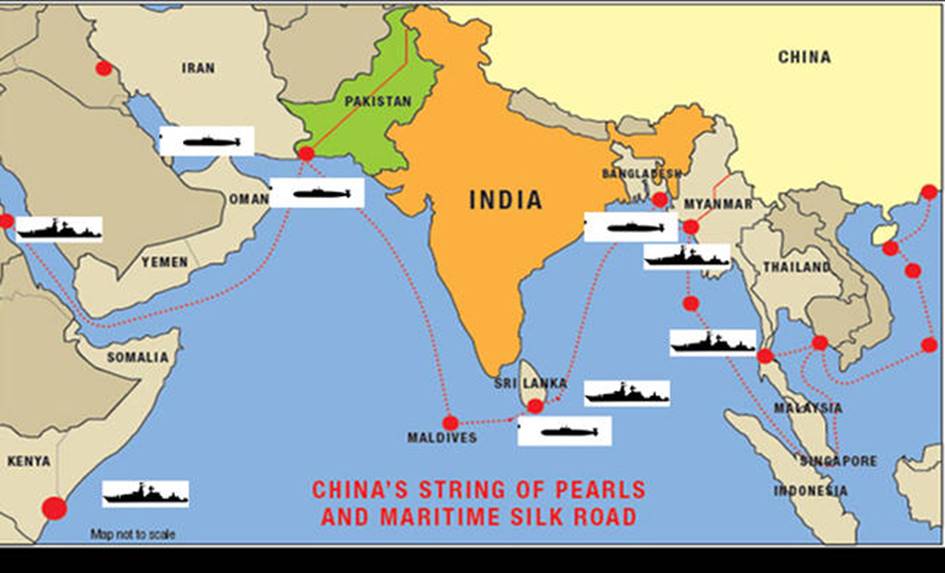
Not only Western powers but increasingly Arab countries and India, need to realize that maritime trade routes are China’s economic jugular. Without having freedom of navigation, access to maritime trade routes, China’s economic future is doomed.
The West, to take advantage of geography, should be incorporating India’s position on the map, and its vast capabilities in the future, into the overall constellation. To counter Chinese or other naval power projections on the world’s busiest maritime route (EU-China/India), including access to Persian Gulf states, India is situated at the center.
As Indian experts have already indicated, Peninsular India dominates the Indian Ocean Region (IOR), highlighting the advantages of its ‘interior lines of communication’ as compared to 8,000-10,000-km-long ‘exterior lines’ that Chinese naval forces have to traverse. Arab countries should also take this into account when dealing with the China-India geo-economics.
To increase maritime trade route security in the future, or at present, one needs to keep in mind that Chinese president Xi Jinping has a clear-eyed vision of attaining his cherished ‘China dream’ via the Belt & Road Initiative (BRI). To meet the demands of the BRI’s ‘maritime Silk Road’ component, he has decreed a “world-class navy” for China, to enable the projection of military power far from home.

A hidden threat in China’s OBOR/BRI approach exists already from the start. For participants or third-party countries, the main risk is the terms and conditions for the financing of China’s BRI projects.
The financial debt resulting from some of these projects has resulted in fears over ‘debt-trap diplomacy. Simply said, if debts cannot be repaid, China takes over the sovereign control of the infrastructure. When looking at the so-called geopolitical ‘String of Pearls’ theory, the map indicates or clearly shows that since 2005 Chinese commercial and military facilities in countries bordering the Indian Ocean resulted in a network on which Chinese maritime dominance could be achieved.
The commercial ports under BRI that encircle India have caused concern, not least because the Chinese-operated container terminal at Colombo Harbour in Sri Lanka, received two Chinese submarine calls in 2014. The latter is also the case with ports in Pakistan, Iran, and Djibouti. In a 2015 National Defense White Paper, the People’s Liberation Army Navy (PLAN) stated that it wants to play a central role in China’s ambition to shift to ‘open seas protection’ instead of its previous prioritization of ‘offshore waters defense’.
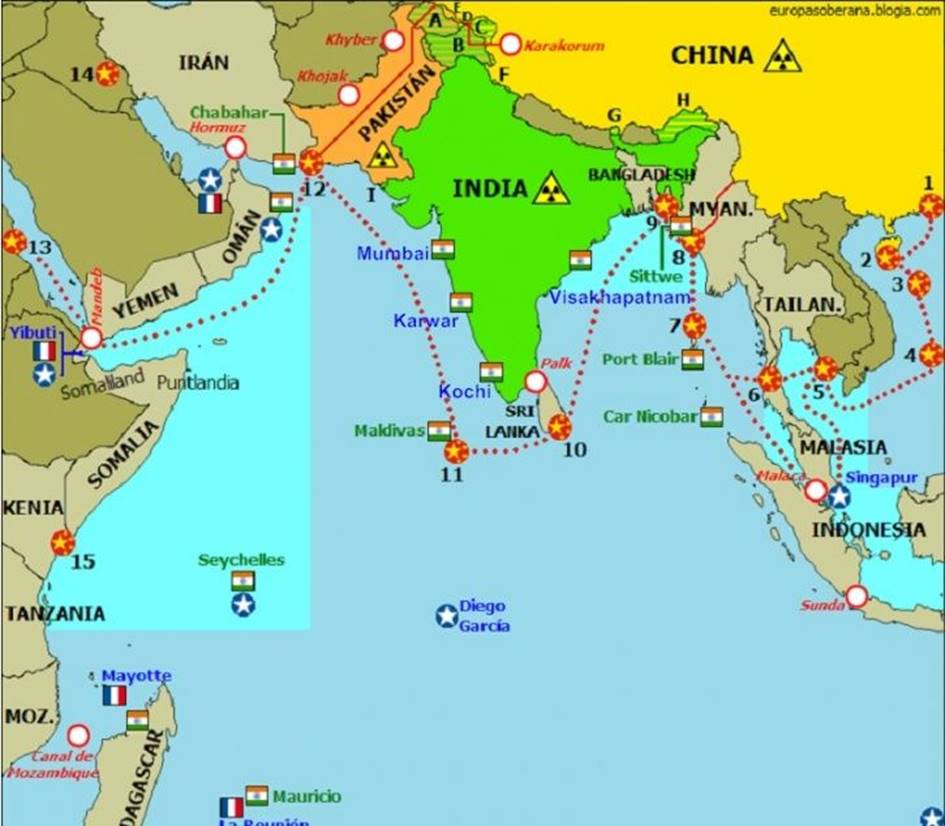
In the last weeks, Chinese naval operations in the Indian Ocean are again getting attention. In January 2021 a Chinese survey ship was accused of “running dark” – a term used to describe a ship operating without transmitting its position – in Indonesian waters.
That survey ship, Xiang Yang Hong 03, was heading toward the Indian Ocean. Another Chinese vessel, Xiang Yang Hong 01, already was active in the Indian Ocean. The survey ships may not have an overtly military mission, but the data gathered will likely be of particular interest to the People’s Liberation Army Navy (PLAN).
Ocean survey data is both useful to military and civilian interests. The main interest seems to be focused on the Ninetyeast Ridge, an underwater mountain range that cuts down through the Eastern Indian Ocean from north to south.
The range is particularly relevant for submarine operations. If Chinese submarines are going to increase their activity in the Indian Ocean, these maps may aid the sub’s survivability.
These developments also come at a time that the People’s Liberation Army Navy (PLAN) is now the largest navy in the world. This development, announced in the US DoD 2020 annual report on the Chinese military, appears to demonstrate a determined strategy in Beijing to develop a powerful blue-water fleet. US analysts are expecting that the PLAN may have an Indian Ocean fleet in the near future.
It also seems that an Indian Ocean strategy is being set up by PLAN. An Indian Ocean strategy for China is clearly needed, as 80% of the country’s oil imports transit through, while all sea lanes are controlled by others. At the same time, 95% of EU-MENA-Africa for China goes through the area.
The latter strategy is being developed since the end of the 20th Century. PLAN port visits have increased substantially. In 1999 there was not a single PLAN port visit in the Indian Ocean region, however, since 2010 the PLAN has averaged close to 20 port visits a year.
China’s focus on the Indian Ocean also has led to the set up of embassies in all six island nations in the Indian Ocean, no other country has done this. At present, PLAN is armed with over 100 advanced destroyers, frigates, and corvettes, Chinese strategists are starting to develop long-term plans for the Indian Ocean. In a statement made by Hu Bo, director of Beijing University’s Center for Maritime Strategy Studies, the latter stated that in the future the main zones for the PLAN are first the western Pacific, followed by the northern Indian Ocean stretching from the Middle East and African coasts to the Malacca Strait”.
He also stated that “in order to achieve an effective military presence in both oceans, China should consider deploying two oceangoing fleets, centered around aircraft carriers- [sic] the Pacific fleet and the Indian Ocean Fleet.” The Chinese Science of Military Strategy states, “Because our at-sea sovereignty and interests have frequently come under intrusions … we need to form into a powerful and strong two oceans layout in order to face the crises that may possibly erupt.” According to the U.S. Naval War College, China has over 100 warships and submarines that are capable of operating in the Indian Ocean.
If coupled with bases in the region, they may offer a viable deterrent to would-be enemies. PLAN presence is already vast in the region, as at any given time there are between six and eight PLAN warships in the northern Indian Ocean.
Not only China is having its eye on the Indian Ocean states and maritime routes. An old adversary also is going to increase its presence, Russia. Vladimir Putin’s geostrategic strategies are vast and opportunistic.
However, Russian maritime security now seems to include the Indian Ocean too. In February 2021 the region witnessed a heightened Russian naval activity in the Indian Ocean. Surprisingly, Russian naval task groups drawn from the Baltic and the Black Sea fleets took part in two international naval exercises – one with Iran and another as part of Pakistan-led multilateral exercise AMAN 2.
Moscow already has indicated that its military presence in the region will soon include a permanent naval replenishment facility as it seeks to promote itself as an alternative source of influence to other global powers, such as the United States and China.
Without addressing the Indian Ocean by name, when looking at several major doctrinal documents (Russia’s 2013 Foreign Policy Concept of Russia’s 2015 National Security Strategy), it has become clear that parts of the region, especially South Asia, Africa, and the Middle East are included.
Russian naval forces, as indicated in its 2015 Maritime Doctrine, have identified the Indian Ocean as one of six regional priority areas in the maritime domain (along with the Atlantic, Arctic, Pacific, Caspian, and the Antarctic).
As part of the latter, it has clearly stated that one of the main objectives is enforcing maritime security through a forward naval presence and good relations with regional states. As experts stated Russia’s long-term strategic engagement with the Indian Ocean region beyond South Asia now involves three main vectors:
- Geopolitical: expanding power by influencings partners, and confronting the role of the United States and China;
- Military-strategic: combating asymmetric security threats, strengthening regional defense ties, and power projection.
- Economic: enhancing economic interests in the Indian Ocean itself and in Africa.
Russia’s economic interests in the Indian Ocean. Russia has reinvigorated former Soviet Union cooperation with India, Ethiopia, Madagascar, Mozambique, Seychelles, and Sudan while starting with new partners Pakistan, South Africa. Russia also has been militarily active in the region, such as counter-piracy patrols in the Gulf of Aden/Horn of Africa (since 2009), special maritime operations in the Gulf of Aden/Arabian Sea, such as extensive hydrographic survey operations and intelligence gathering, Naval exercise MOSI with China and South Africa off the Cape of Good Hope (2019), naval exercise Maritime Security Belt in the Gulf of Oman with China and Iran (2019) and with Iran (2021), regular port calls in countries such as Madagascar, Mozambique, Oman, Seychelles, South Africa, Sudan and aerial forward operations (Tu-160 Blackjack bomber task group) in South Africa (2019).
More important are the bilateral defense or naval agreements since 2017 with Egypt, Central African Republic, Ethiopia, Madagascar, Mozambique, and Sudan. Russian navy also has received port access rights in Madagascar, Mozambique, and Sudan, while others (Egypt, Central African Republic, Madagascar, Mozambique, and Sudan) have allowed the Russian Air Force to use their airspace.
The ongoing reassessments of geopolitical and military power projections in the South China Sea should not have a detrimental impact on the security and stability of other regions.
The current focus on the China-Taiwan and “freedom of navigation” issues in the SCS are having already negative repercussions for global trade and regional security.
To expect that regional power brokers in the Greater Middle East are able and willing to confront new challenges is maybe wishful thinking but definitely not reality. At the same time, China’s power projections into the Indian Ocean, East Africa, and Greater Middle East, still considered to be solely targeting the security of OBOR or its own maritime interests could be a situation that will confront EU-NATO and the Arab World with a fight compliments that we don’t want. A refocus on MENA and Indian Ocean issues is necessary, as maritime traffic or an immense part of the trade is being confronted otherwise with a Chinese (or other) naval presence parties are not able to confront adequately. Washington and Brussels need to get out of their One China Strategic Approach, Beijing already is walking and sailing in other countries’ backyards.
Napomena o autorskim pravima: Dozvoljeno preuzimanje sadržaja isključivo uz navođenje linka prema stranici našeg portala sa koje je sadržaj preuzet. Stavovi izraženi u ovom tekstu autorovi su i ne odražavaju nužno uredničku politiku The Balkantimes Press.
Copyright Notice: It is allowed to download the content only by providing a link to the page of our portal from which the content was downloaded. The views expressed in this text are those of the authors and do not necessarily reflect the editorial policies of The Balkantimes Press.
